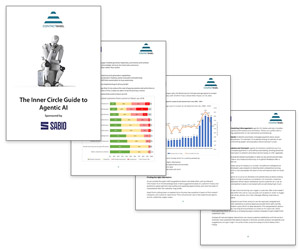Applying effective performance management is a great way to optimise agent performance. However, the process can also benefit from the latest automated scoring capabilities.
When it comes to quality management, too many organisations still rely on traditional quality monitoring and random call sampling to evaluate their customer interactions.
While this kind of quality monitoring approach can help in terms of improving agent performance, team leaders and contact centre supervisors across our industry know all too well that it can come with a significant administrative burden.
In terms of contact centre quality monitoring productivity, many organisations evaluate less than 1% of all contacts, and quality scoring can be a time-consuming activity – resulting in perhaps just 30–50 calls evaluated out of the thousands handled by each agent per year.
Additionally, the fact that quality measurements will inevitably be conducted by a number of different scorers over a period of time can lead to inconsistencies and variations in these scores.
That’s why it now makes sense for organisations to consider how the latest automated scoring technology can play a role in optimising contact centre quality management.
With automated quality management in place as part of your workforce optimisation strategy, you can actually automate much of the quality management process – from scoring evaluations through to assigning coaching.
Also, with the ability to automatically score up to 100% of your recorded calls, the phased introduction of a solution – such as Verint Automated Quality Management – opens up the possibility of shifting contact centre management resources.
Time previously spent on scoring and other manual quality monitoring tasks could be transferred to higher value activities such as analysing calls and focusing on critical issues such as coaching and compliance.
Automate – but at Your Own Pace
While 100% automated quality might be technically achievable, the reality is that any transition will need to be phased.
For example, you may want to start by checking if greetings are being handled correctly, or that agents are managing your critical compliance requirements.
However, there will probably be specific call or interaction quality criteria that require specialist analysis from quality analysts to make effective assessments.
Employees may also have concerns around the process, so it’s important that any automated quality initiative builds in a process for agents to query interaction assessments – just like those that are already part of the traditional quality monitoring model.
Companies like Sabio are excited by the potential of automated quality, particularly its ability to accelerate the scoring of routine tasks and allowing CX teams to focus more of their attention on more critical aspects of the customer journey.
Author: Robyn Coppell
Published On: 3rd Jul 2018
Read more about - Archived Content, Sabio











